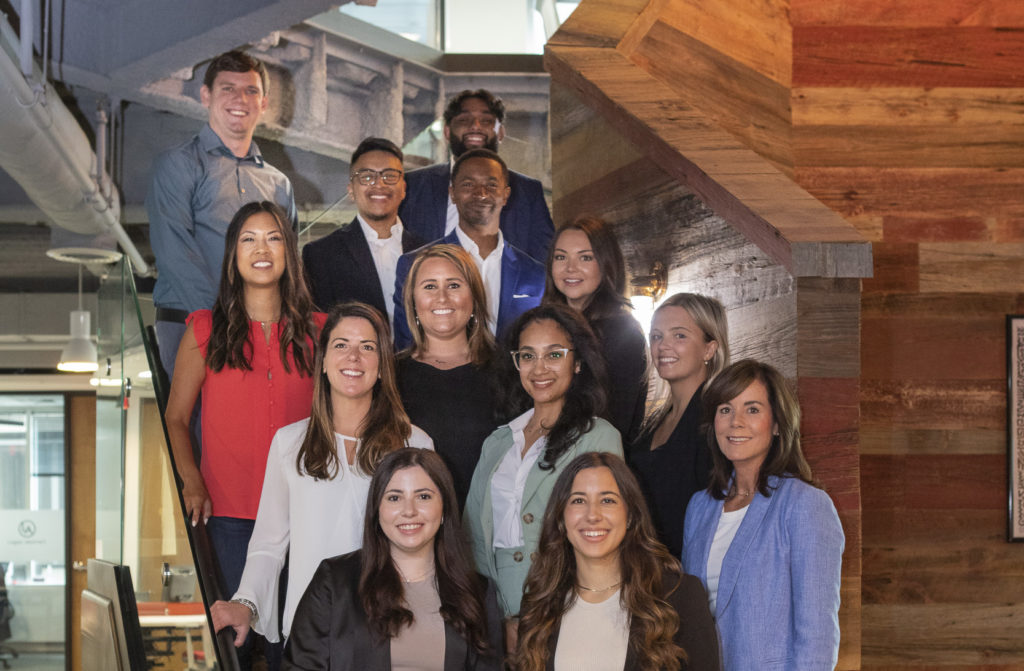
Part one of this two-part DE&I blog series brought to you by Contemporary Staffing Solutions covers the “what” in DE&I, so read on here in part two to understand the “why” and “how” to unravel the importance and implementation of a DE&I strategy.
What makes DE&I so important?
A company that actively undertakes DE&I initiatives benefits internally and externally across a wide range of aspects.
Sales Director, Stephanie Staiano of CSS Professional Staffing Group, explains that “diversity and inclusion go hand in hand with the success of an organization. It is imperative for a company’s innovation.”
Metrics like financial performance, talent retention, internal employee performance, and external reputation all hinge on the sophistication of an organization’s DE&I operation. As previously mentioned in Part One referencing a McKinsey study, the financial performance of a company improves drastically with greater ethnic and gender diversity. The success at CSS is a direct correlation to this metric, as its leadership team is made of 73 percent women compared to the national average of 35 percent. More diverse organizations have time and time again reported better financial performances than their homogeneous counterparts in metrics like:
- Cash flow ROI,
- EBIDTA (earnings before interest, taxes, depreciation, and amortization) margins
- Gross margins
- Return on assets, equity, and sales
- Revenue
- And more
Attracting and retaining top talent is another key indicator of the importance of DE&I. A Catalyst study reported that 35 percent of an employee’s emotional investment and 20 percent of their desire to stay with their current company is linked to inclusion. It should not come as a surprise that strong feelings of acceptance and belonging at work – as well as in groups outside of work – drive higher performance and steadfast loyalty.
Acceptance and inclusion grow from open conversations, and Peergenics Salesforce Sales Director, Liana Trigg notes that “These conversations are important because if you can’t bring your best self to work you cannot accomplish everything you are looking to accomplish on a day-to-day basis.”
When DE&I initiatives are neglected, turnover skyrockets. The same Catalyst study revealed that 50 to 69 percent of Canadians of color who reported bias in their workplace also reported a high likelihood of leaving their jobs.
Emotional well-being leads to improved employee performance and focus. According to a Deloitte report, cognitive and demographic diversity in thought improves team innovation by 20 percent. This should come as no surprise as like minds will not overturn as many stones as a set of diverse ones will.
In his book “Range: Why Generalists Triumph in a Specialized World,” author David Epstein introduces “The Outside Advantage.” Epstein explains how the biggest innovations often come from individuals who know little to nothing about a particular field or have a wildly different background than their counterparts to whom they contribute ideas. This comes from the renewed perspective unburdened by the known or assumed obstacles that plague experts in their own field.
Ashlei Randolph, CSS Director of Diversity and Culture not only wants DE&I to be a talking point, “but something that is embedded into the fabric of our organization” to push innovation.
Finally, a strong commitment to DE&I enhances company reputation to current and potential employees, customers, clients, and other industry players. A Harvard Business Review study found that more diverse companies with inherent and acquired diversity are 70 percent likelier to capture a new market. For prospective employees, Glassdoor reported that 76 percent of job seekers noted that a diverse workforce is a vital factor when considering job offers. These studies and more show DE&I is a full-cycle advantage both inside and out for an organization looking to lead its industry.
Taking the first steps on your DE&I journey
Breaking ground on a DE&I policy from the ground up is a lot like building a marketing campaign from the same level. Progress and returns need to be monitored over the long haul with ample patience for DE&I operation iteration with heavy input from human resources and learning and development teams. It requires a top-down approach from leaders willing to step outside their comfort zones and into the worlds of their employees. Interestingly enough, and what can be seen as a subtle win for humanity, is that managers respond better to DE&I proposals and social issues when argued for in moral terms rather than monetary ones. Here are a few pivotal steps to take when building a DE&I program from the ground up.
- Collate industry DE&I data both internally and with competitors to understand where your organization sits relative to the rest
- Communicate your company’s industry standing with DE&I to upper management as well as employees for context
- Hire a DE&I manager to collaborate with all other teams
- Allocate a team to this new DE&I manger, or at the very least have DE&I representatives from all other teams for delegated insight
- Create organizational objectives and put a timeline in place to meet said objectives
- Track DE&I KPIs and actively change policies and metrics where needed
Join CSS as an employee, customer, or client to connect with a staffing industry thought leader in DE&I
The CSS community is committed to leading the charge on DE&I with the expert leadership of Diversity and Culture Director, Ashlei Randolph. The five business units of CSS, CSS Professional Staffing Group, CSS ProSearch, CSS Tec, Peergenics, and CSSvSource are here to serve your staffing needs in both contingent and direct hire talent across industries as well as Salesforce servicing. Reach out to any of the five business units above or on the CSS flagship site here to lead your industry in 2023 with the best and brightest talent of all backgrounds.
